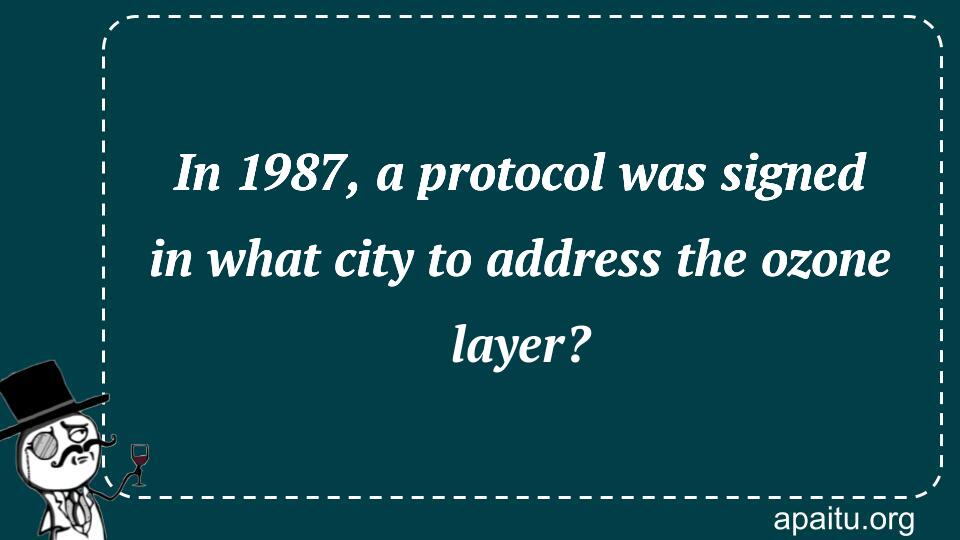Question
Here is the question : IN 1987, A PROTOCOL WAS SIGNED IN WHAT CITY TO ADDRESS THE OZONE LAYER?
Option
Here is the option for the question :
- Buenos Aires, Argentina
- Montreal, Canada
- Phoenix, Arizona
- The Hague, The Netherlands
The Answer:
And, the answer for the the question is :
Explanation:
Signed in 1987, the Montreal Protocol on Substances That Deplete the Ozone Layer is an international agreement that has subsequently been updated seven times and ratified by 196 countries. CFCs and HCFCs, both of which contribute to the depletion of the ozone layer, were targeted for elimination as part of the protocol’s objectives. As a result, there was a reduction in the amount of UV light that reached the Earth’s atmosphere.

In 1987, a historic protocol was signed in Montreal, Canada, aimed at addressing the depletion of the Earth’s ozone layer. The Montreal Protocol on Substances that Deplete the Ozone Layer was a landmark agreement that marked the first time the international community came together to address a global environmental crisis.
The ozone layer is a thin layer of gas in the Earth’s atmosphere that protects life on the planet from harmful ultraviolet radiation from the sun. However, in the 1970s and 1980s, scientists discovered that certain chemicals, such as chlorofluorocarbons (CFCs), were depleting the ozone layer and causing a hole to form over Antarctica.
Concerns about the impact of ozone depletion on human health and the environment led to the signing of the Montreal Protocol. The protocol called for the gradual phase-out of the production and use of ozone-depleting substances, including CFCs, and set targets for reducing their use over time.
Since the signing of the Montreal Protocol, significant progress has been made in reducing the production and use of ozone-depleting substances. The ozone hole over Antarctica has begun to shrink, and it is projected to fully recover by the middle of this century.
The success of the Montreal Protocol has been widely hailed as a model for international cooperation on environmental issues. The agreement has been ratified by nearly 200 countries, making it one of the most widely accepted international agreements in history.
However, there is still work to be done to fully address the issue of ozone depletion. While the production and use of ozone-depleting substances have been significantly reduced, there are still challenges in ensuring that these substances are fully phased out and that alternatives are widely adopted.
the signing of the Montreal Protocol in 1987 was a landmark moment in the history of environmental conservation. The agreement demonstrated the power of international cooperation and set a precedent for addressing global environmental challenges in a collaborative and effective manner.